Contents
Operating Cement plant During a Pandemic Corona Virus COVID-19 BY John Kline
CLICK HERE NOW TO DOWNLOAD MOST IMPORTANT BOOKS IN CEMENT INDUSTRY + PRACTICAL EXCEL SHEETS TO HELP YOU IN YOUR DAILY WORK
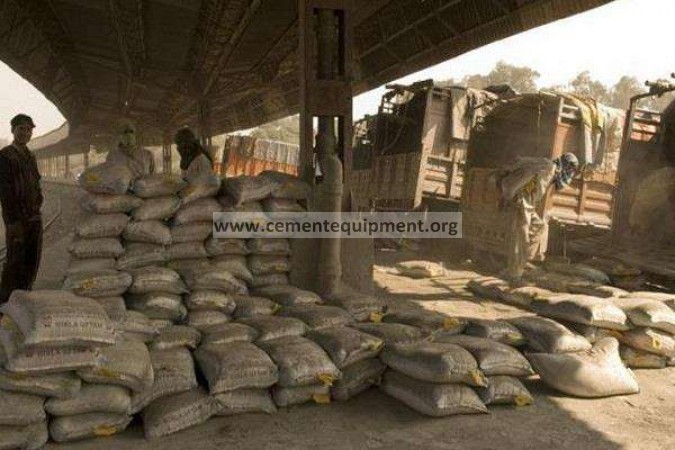
Operating During a Pandemic
This article has been written after interviewing several cement companies operating during the Corona Virus pandemic currently impacting most of the world. This paper looks specifically at the practices that different cement plants are using to maintain operations, while respecting health and safety protocols, and protecting their: plant staff, families, and communities. These practices are meant to give ideas to other companies that are or may soon be struggling with operations during these troubled times.
Corporate Policies
Different countries, jurisdictions and companies will have their own specific policies for operating and dealing with the Pandemic. This article is not intended to provide overall corporate policy, but moreover to provide some specific ideas for operating plants during the Pandemic. In cases where corporate policies have not yet been promulgated, it is recommended to seek out practical advice on health websites.
Change
Change is happening quickly. The situation is fluid and changing almost daily. Continue to monitor the situation and adapt as things change in your local area and within your company. There can be no “hard promises” in these times, and employees need to understand that. Plant management should be ready for every possible scenario including;
• One or many employees may become infected
• The plant and / or local area may be placed under quarantine
• The plant may be shut down by the corporate office or local government
• The supply chain may become severely impacted
Plant management needs to understand the critical positions to be filled for operations. Plans should be developed to understand the issues around personnel who do not come to work. Also a plan or procedure for sending people home from work should be developed and communicated. Deciding these factors on a case by case basis will not be very popular.
Plants will be operating under a new set of rules. Some employees may not adjust to the new situations and requirements as quickly as desired. Consequences for not following the rules should be defined and communicated in advance of implementation. People need to know what is expected from them and what the consequences for their actions or inactions will be. Once formulated the new rules and consequence must be uniformly enforced.
Communications
Open and clear communications are always important. However communications are critical in times like this. Not controlling the communications is allowing the communications to control you. Crisis communication protocols should be followed. Having a single point of contact assists in allowing all other personnel to focus on their own tasks. Having periodic updates according to a fixed schedule discourages others from calling in for their own personal updates.
Training others to wait for updates and when to expect communications can reduce the number of incoming calls. Establishing a precise update schedule will depend on how fast the situation is changing and the need of stakeholders to understand and react to those changes. Once you establish a communications schedule, be sure to stay on schedule or the incoming phone calls will begin again. Generally a daily call is sufficient for update purposes.
Communications need to go beyond employees and corporate offices and should include all stakeholders. These could include local and federal government agencies, corporate offices, customers, suppliers, neighbors, and of course employees.
Consider which communications need to be pushed or pulled. A push communication is one that the plant would send out or “push” to others. These are the most important communications that others must receive. Pull communications are those that people can access on their own. These are often posted on a website and / or available through prerecorded messages. As an example, weekly schedule changes can be located on a website that personnel can check before coming to work. Having pull communications can greatly reduce the amount of external communications that a plant receives.
Be careful of over communicating non-essential information as the receivers will stop paying attention and may then miss an important communique.
Employee, Contractor, Supplier, and Visitor Access
The Corona Virus is spread through human contact. One means to reduce the spread of the virus is to reduce human interactions to the bare minimum. Many plants have prevented non-critical workers from entering the plant. Some of these workers can perform their functions remotely. Companies should consider what equipment would be required for the non-critical employees to work from home.
Most companies have limited plant entry to the minimum number necessary to maintain operations. This is usually accomplished by preventing access to non-essential personnel at the plant entrance gate. Non-essential personnel can be turned away when the gate is guarded. When access is controlled electronically, non-essential personnel should have their access privileges suspended. It is recommended to post signs at the entrance points that explain the procedures for gaining approval to access the plant. It is recommended to have a name and phone number to contact especially if access is locked and unmanned. Some plants that do not have controlled access to the site, have locked their office building doors to prevent unannounced visitors. Similar signs should be posted in the pffice building doorways in this case.

Finger pulse – Upgraded Pulse Rate Tracker
Many companies are considering methods in which they can confirm that employees, contractors, and visitors are well enough to adequately perform their functions without infecting others. Taking temperatures, or checking for fevers is the most common method being used today. In addition, a new method that has been discussed is asking employees to hold their breath for 15 seconds without discomfort. Another easy check is to use a common finger clamp device to measure blood oxygen levels. The rationale being that the main difference between the common flu and the virus is the attack on the respiratory system. It is recommended to use a combination of measures, following up to date health guidelines.
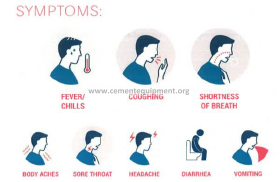
One issue with the Corona virus is that it is able to be transmitted asymptomatically. That is, someone could be infected and transmitting the disease while showing no physical symptoms themselves. Some plants have asked employees to self-check before coming to work. Employees are expected to report if they or anyone they are in contact with have shown any effects of the illness. Employees have been asked to limit their personal travel and report before working if they have traveled or possibly been exposed to infected person during time away from work.
Only essential contractors are being allowed on the plant sites. Contractors have also been asked to provide documentation each day before entering the plant. The documentation often states that all employees warrant that they are feeling healthy, and have not been in contact with anyone who has been infected.
Some plants have medical staff on site and can have incoming employees quickly checked for temperature, breath control, and / or blood oxygen levels. Other plants may have local doctors that can be consulted in their offices or over the phone.
In summary, minimizing plant access to only essential personnel will be the safest way to continue operations and protect personnel. Preventing access to non-essential personnel reduces the risk of spreading the disease. Having a robust system to identify and prevent access of at risk personnel can be a starting point for maintaining a healthy workforce and continuing plant operations.
Social Distancing
Workers arriving and working at the plant site should observe the “social distancing” principles. Social distancing entails remaining at a safe distance from all other workers. Minimizing the number of people on site has already been mentioned and many plants are asking non-essential personnel to work from home. Many coordination meetings have been converted from face to face meeting to phone-in or internet meetings. Non-essential personnel are being excluded from meetings. One company ensures that the meeting organizer is responsible for maintaining the correct distances between participants and is also responsible for sanitizing the meeting area after the meeting.
Operating crews have been divided into smaller teams. Two person teams can usually maintain a safe distance working together. Some plants have divided their crews into A and B teams, one team on-site while the other team is off-site. In this manner team B can fill in for team A if one or more members on team A become infected. Other practical ideas include staggering start and stop times to avoid large groups of employees congregating at gates, time clocks, and / or change rooms. Have one individual with proper PPE handle the time cards where manual systems exist. Stagger break and meal times to avoid employees congregating in break areas.
Advertise and enforce social distancing rules which could include:
• One person in a bathroom at a time
• One person at a time in an elevator
• One person only in a vehicle
• No congregating in the change rooms or lunch area, etc.
Encourage employees and contractors to take breaks and meals alone or in small isolated groups. Outside in the sunshine and fresh air when possible. Some plants are adding picnic tables and lawn chairs in different areas for this purpose. Provide additional cleaning and sanitizing stations so that workers can clean hands and faces before entering buildings. Many types of portable stations exist. Foot controlled stations can be very practical for sanitizing hands before entering common areas. Many plants are insisting that the contractors working on site have their own sanitary facilities and do not enter or use any plant facilities.
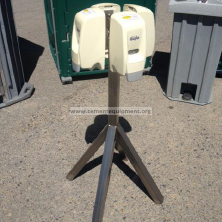
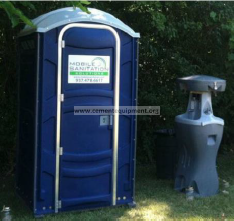
https://stoneindustries.com/portable-toilets/hand-sanitizer-stations/
http://mobilesanitation.com/hand-washing-sanitizing-stations/
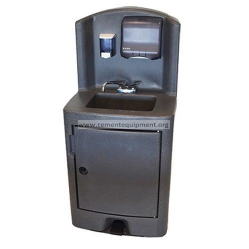
https://www.centralrestaurant.com/Crown-Verity-CV-PHS-5C-Portable-Self-Contained-Hand-Wash-Sink
https://www.amazon.com/Best-Sanitizers-MD10012-Activated-Dispenser/dp/B00BMEHBMI
Social distancing means keeping people apart. This may not be a natural tendency for most people. Good signage may help, but supervisors and managers will be the key to maintaining good practices.
Consider the situations when four or more people are together, can anything be done to decrease the number of people to the bare minimum. Always consider outdoor meetings.
Incoming Materials & Paperwork
People and packages coming into the plant can carry the virus. This includes the paperwork that accompanies these materials and the pens used to sign off on deliveries. Incoming supplies should be limited to only those required for the immediate ongoing operation of the plant. People who are receiving incoming materials should be provided with the proper training and PPE including gloves and face masks. When possible, have only one or two people authorized to receive materials. Limit delivery hours to accommodate the plant, but ensure your suppliers are aware of any changes in scheduling.
The above being said, it is suggested for plants to stock up on items that will be in demand during the pandemic. This includes soaps, sanitizers, gloves, masks, respirators, paper products, and other hygienic supplies. Keeping in mind that extra cleaning and sanitizing will be occurring and that many other companies may be seeking similar supplies at the same time.
It is recommended to have one or two people responsible for incoming paperwork and mail. Again with the proper training and PPE. Mail can be opened by one person with the proper PPE, scanned or photographed, and sent electronically to the final recipient, thus greatly reducing the risk of spreading the virus through the mail.
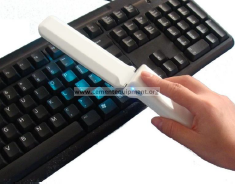
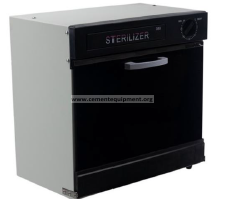
Hand held UV wands and UV sterilizer stations can be used to disinfect smaller items. Employees should be trained not to pass paperwork throughout the plant nor to share pens and pencils. Electronic communications of forms should be used as much as possible. For example a work place inspection can be completed on a smart phone, or on paper by one person with the proper PPE. It can then be forwarded electronically to someone off site that files it in the proper system folder. The sender can note all personnel in attendance and even take a photo if a record of attendance is required.
Money can also carry the virus. When practical all cash exchanges should be stopped or at least minimized. When cash transactions must be carried out they should be limited to the fewest number of people possible. Cash handlers should be properly trained and provided with the proper PPE for handling cash. Hand sanitizing stations should be in close proximity to any locations that receive of disperse cash.
Outbound Materials
The largest issue with outbound materials is limiting the interaction between the drivers picking up the materials and plant personnel. Many companies have gone to remote signature pads for signing outbound bills of lading (BOL) for shipments. Other companies are filling in the driver’s name on the BOL. In this manner the driver only receives the BOL without passing paper and pens back and forth. Be sure that employees are using proper PPE and procedures in the event that drivers are still signing and returning the BOL. Many plants have locked their dispatch offices and scale house doors to prevent unauthorized entry by drivers.
Other outbound materials should be handled on a case by case basis. The primary objective is to avoid contamination through human contact, or on the surfaces of materials and paperwork, including pens.
Cleaning and Sanitizing
Many plants are scheduling extra cleaning with three or more cleanings per day. These typically include sanitizing all door handles and common work area / meeting areas plus kitchens and bathrooms. Doors that are frequently used can be blocked open during normal hours to prevent excessive handling of the door knobs. Be sure that such doors are allowed to remain open however. Employees should be encouraged to clean and sanitize their hands before entering buildings. Outdoor hand sanitizing stations, pictured above, are perfect for this.
It is recommended to have only one driver dedicated to a vehicle and that driver be responsible for sanitizing the vehicle interior before and after each shift or use. When multiple operators will utilize the same vehicle, each should be provided with cleaning supplies sufficient to allow then to sanitize the vehicle before and after each use.
As mentioned above, meeting organizers could be responsible for ensuring the cleaning and sanitizing of meeting rooms after meetings are concluded. However, meet outdoors whenever possible. Ventilate offices and interior spaces to the best extent possible. Sunshine and fresh air can be powerful disinfectants.
Many companies are upgrading the cleaning supplies they use. Hospital disinfectants may be a better option than just chlorinated cleaners. Some companies are completely disinfecting offices using a fogging device on a weekly or monthly basis. All plants should consider the protocol they will follow if / when an employee has shown to be infected.
Controlling Critical PPE
Some protective equipment and materials, such as sanitizers, may be in short supply. Many plants are removing dust masks from their open stores area and / or vending machines. In these cases replacement masks can only be obtained from a supervisor when returning a used mask. This helps avoid the hoarding of PPE. Similar measures should be considered for sanitizers, paper products and other materials that could be in short supply and coveted by employees.
As mentioned previously, supply chains may be stretched to the limit for these critical supplies. Ensure that you have enough of the critical PPE in stock for your operations. Do not hoard PPE that may be better used in local hospitals and be prepared to lose your PPE. At least one state in the US has closed businesses and confiscated critical PPE, such as dust masks, needed for local hospitals.
Remote Support
Plants should consider operating with a skeleton crew. Having fewer people on site enables social distancing and minimizes the risk of large numbers of employees being infected at the same time. Having support personnel remote, but in contact with the operations can allow for competent trouble shooting and supervision. Consider that support could come from:
• The plant’s own employees working from home;
• Corporate employees working from corporate offices or home, and;
• Suppliers, vendors, and / or consultants working remotely as well.
Determine what types of support may be needed and then identify potential sources for that support. Develop coverage schedules when remote support may be required over extended periods. Ensure that remote supporters have adequate means of communication to assist the operation. Seek means to enable remote support, such as having smart phones available for photographs or videos. Helmet mounted cameras could also be useful for more complex issues. Ensure that operating personnel understand what remote support is available and how to engage it.
Summary and Conclusions
These will be tough times that the whole world must endure together. Sharing good practices and ideas is one way to ease the situation. It is hoped that this document is the start of something larger that can be expanded upon by the larger cement manufacturing community and related industries. Sharing our difficulties and work arounds is one way to assist in defeating the Corona virus while preparing ourselves for future issues. Thus, minimizing the risk to ourselves, our fellow employees, families, and communities. Please work smart and contribute your good ideas.
https://www.who.int/health-topics/coronavirus
https://www.who.int/emergencies/diseases/novel-coronavirus-2019
you Can Download this report as pdf + all important cement books by clicking here
Thanks John – very useful!